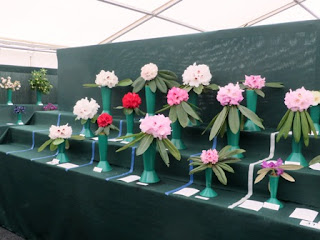Hayward Tyler Hot Air Engine
This engine may possibly be the only engine of its type
still in its original location.
In the garden is a small building which has always been
known as the pump house. It turns out
that the engine in the pump house is a hot air engine which was used to supply
the house with water from one of the ponds.
The engine was fuelled by logs from the estate and could be run by
unskilled workers. It is not known when
the engine was installed but it probably dates from 1900 or earlier. When Edward Boscawen bought the Garden in
1966 he discovered the pump house and realised that the Engine was of interest
and restored the pump house which prevented further deterioration of the engine
and enabled him to start work on the restoration.
In 2013 local members
of the Sussex Engine and Associated Machinery Society (SEAMS) took on the
challenge of restoring the engine. It is
now successfully restored and can be seen running on certain days throughout
the year - 23rd April, 2nd May, 19th June, 21stAugust and 16th October.












